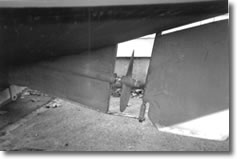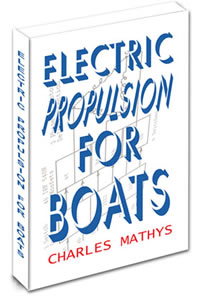Introduction First Edition
My Electric Boats: First Steps
 I started thinking about electric propulsion for boats about seven years ago. At the time, I owned an O'Day 20 ft sailboat. Knowing that an efficient hull was needed to propel the boat with as little power as possible, I decided to use the O'Day sailing hull to test the idea.
I started thinking about electric propulsion for boats about seven years ago. At the time, I owned an O'Day 20 ft sailboat. Knowing that an efficient hull was needed to propel the boat with as little power as possible, I decided to use the O'Day sailing hull to test the idea.
The simplest solution was to buy an electric trolling motor and to put the two 12 volt batteries in series to provide 24 volts of power. At 30 amps, the input power to the motor was 720 watts or nearly 1 hp. (1 hp equals 746 watts.) The results were under-whelming: at full power the boat moved at possibly 2 or 3 mph and lost steerage whenever the wind picked up. To a retired engineer, who loves everything about boats and has time on his hands, the seed of a challenge had been planted. After all, 1 hp was the equivalent of 7 "manpower" and you would think that 7 rowers pulling hard could move a small boat fairly quickly while keeping it under control. So, the question was how much power was needed to move a small boat at hull speed and could that amount of power realistically be generated electrically?
The answer is that 1 to 2 hp is adequate to achieve hull speed in a small sailboat.
FREE PREVIEW: Download
Click here for the complete "Introduction Section" from Electric Propulsion for Boats in PDF.
